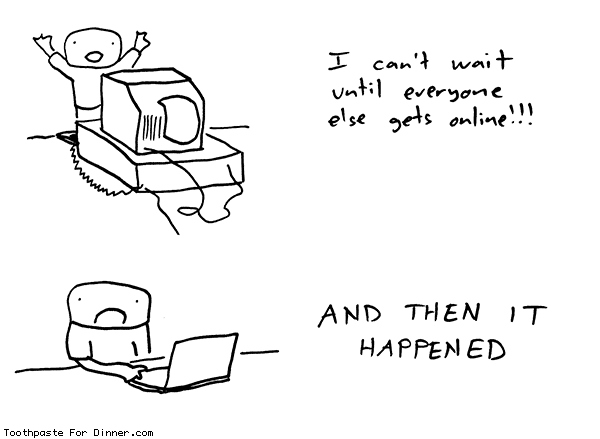(Mental) Health, Poetry, and Media
Here’s what was important this week…
The Super Bowl was this past weekend, as you probably know. With the Olympics starting it’s old news, but one of the big topics in journalism in the lead-up to the event was how football (both the sport and the NFL) handles concussions. Football isn’t the only sport with a concussion problem– hockey and soccer are two other notables, and many more can be assumed (rugby, anyone?). But what makes football different is both its presence in the American consciousness–it’s a truly American sport–and the prominent deaths and deteriorations of former stars. In the LA Review of Books, a devoted football fan reflects on the sport and injury risk, while an essay in The New Inquiry sheds light on the reactions of the NFL. At one point, the essay sardonically quotes a co-chair of the NFL Mild Traumatic Brain Injury Committee (MTBI):
““Anecdotes do not make scientifically valid evidence,” he stated, thus reducing evidence of CTE in former football players to the status of that story you tell about your cat. “
Both essays draw heavily from the “League of Denial” documentary and book, but they take slightly different perspectives and analyses, and are both worth the read.
Mental health crisis support is slowly moving to more accessible mediums. Crisis hotlines are beginning to take advantage of texting, and many campus programs are making efforts to incorporate online chats and modules into their practices. University of Florida implemented a online module-type method of counseling (with many safeguards in place) to supplement its traditional counseling offerings. It incorporated elements of cognitive behavioral therapy as well, which is also accessible through free online modules. At U-M, the sexual assault prevention and awareness center began offering online chat as part of their support methods.
On the subject of sexual assault prevention and awareness, Arikia Millikan examines the feeling of being prey as a woman in public, noting, “I am forced to acknowledge my vulnerability by strangers almost every single day while walking down the street in big cities.” Sarah Nicole Prickett, editor of Adult Magazine, reflects on how “for every rape joke there is an even worse joke in which nobody even sees rape.” Speaking of rape jokes, Patricia Lockwood wrote a poem about a rape joke. These reflections all made me uncomfortable, because I can see myself in these women and it’s astounding the lack of awareness and conscientiousness shown to rape survivors, even those who don’t want to be seen as “victims” or “survivors”. Of course, some of this lack of compassion is on display with the open letter that Dylan Farrow wrote to Woody Allen. Probably the best response (that I read) to her letter is from Aaron Bady at The New Inquiry.
Microsoft has a new CEO, and he enjoys poetry:
He isn’t the only one who thinks that code can be poetry—Stanford held a code poetry slam in December. Not only that, but since April Fools Day of last year, the NYTimes has been generating haikus from its articles and publishing them to a tumblr. Meanwhile, Google’s autocomplete feature can be used to write poetry as well.
Poetry is one of the oldest forms of expression, so it’s not too surprising that it’s been incorporated into our love affair with all things technology. I took time this week to write something about how “old” media like books and vinyl remain popular or are experiencing a resurgence in popularity as of late. Of course, as soon as I write something, more things are published that expand on ideas that I’ve had, so I’ll be writing a follow-up soon. If you’ve come across some essays that reflect on the popularity, nostalgia, and experience of books, vinyl, cassette tapes (and why that’s something that new technology like instagram, facebook’s paper app, and skeumorphic design seek to replicate), or if you have ideas on the topic yourself that you’d like to share, leave me a comment. I’d love to hear your thoughts!
Not only do some forms of “old” media remain popular, newer forms of media eschew longevity entirely by using temporary forms of social media, such as Snapchat. As Clive Thompson puts it:
I don’t use Snapchat myself, in large part because I already use so many other forms of social media. However, when I plug my phone into computer and it tries to add all the photos I’ve taken on my phone to my photo management program, I realize just what sorts of photos I take that I definitely don’t need to keep–photos of bread at the supermarket, the inside of my pocket–or ones that mattered at the time but that don’t need to stick around, like pictures of my food that I shared with some family members. Nathan Jurgenson, resident sociologist for Snapchat, expands on this idea, wondering:
I took that idea into my own hands after I deleted my livejournal, but it often isn’t so easy now that it is easier to reblog or retweet the social media interactions of others, and as sharing photos and locations, rather than posting our own thoughts predominate as our displays on social media.
I’m going to share a lot of music this week. Broken Bells has a new album called After the Disco out this week (and the title track is great, although the rest of the album has received somewhat mixed reviews).
However, I can’t stop listening to Miguel and Laura Mvula this week. Keeping soul alive in the present day (maybe I’ll add music genres to my blog post follow-up), take the time to check out Miguel’s new song Simplethings, and Laura Mvula’s song Green Gardens (which sadly is not embeddable).
Thanks for reading!
